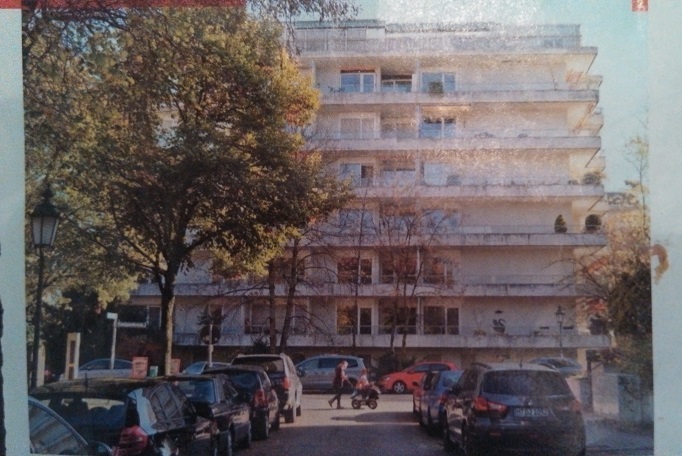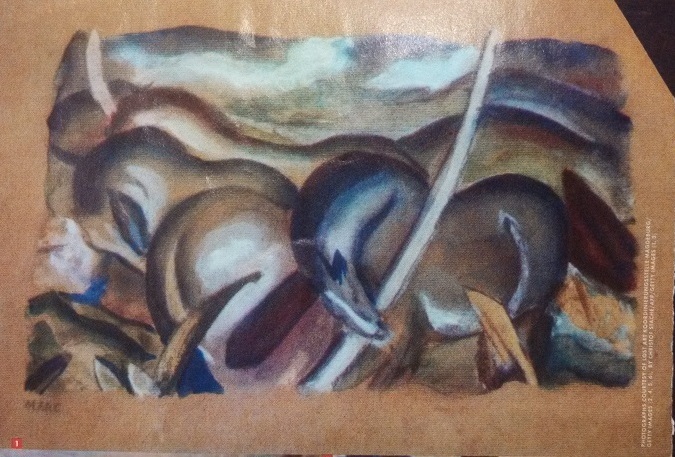溪邊椰樓
好好做事,乖乖作人,諄諄教子,殷殷我心.譯文連載[附英文原文]:邪魔畫商 (二)
二、審美清戶[Aesthetic Cleansing]
這批畫作落戶於康納利斯在慕尼黑公寓的始末本身,就是一場悲劇。劇幕起源於1892年,醫生及社會評論家麥克斯·諾爾道出版的《墮落論》一書,他在書中提到世紀末的歐洲所出現的一些藝術和文化創作是病態思潮的產物。他舉出一些他個人的眼中釘為例,特別提到高蹈詩派、象征主義,還有易卜生、王爾德、托爾斯泰及左拉的追隨者。
希特勒的種族理想主義受到諾爾道一書的影響。而諾爾道身為布達佩斯一個猶太教牧師之子,他同時指出歐洲日益嚴重的反猶太主義傾向是歐洲社會墮落的另一體現。這一點卻似乎在希特勒身上沒有起到任何作用。
1933年,希特勒掌權,他宣布向“文化解體”發起“無情宣戰”。他下令查封“墮落藝術家”以及他們的作品。以他的標準,這包括一切有別於傳統表現形式的藝術:不但是新興的表現派、立體派、達達派、野獸派、未來派和主觀現實派,就連被普遍接受的梵高、賽尚、馬蒂斯的印象派和康提斯基的夢境印象派也包括在內。他們統被歸類為猶太布爾什維克藝術。盡管這些許多作品並非出自猶太藝術家之手,可在希特勒看來,其仍然浸淫和體現著對猶太布爾什維克,這對德國的道德基準起著腐蝕作用。這些藝術家是文化上的猶太布爾什維克,整個現代畫派都掌握在猶太畫商、猶太畫廊業主和猶太收藏家的手裏。因此,隻有鏟除這一部分的藝術才能讓德國走回正軌。
也許希特勒在對同代藝術家的生命和事業的摧毀裏存有一定的報複因素,因為他自己的藝術家夢想無疾而終。而這場審美清戶涉及所有藝術形式。表現主義以及其它前衛形式的電影遭禁,導致一批如弗理茲·朗、比利·萬爾德等電影人遊走好萊塢。卡夫卡、弗洛伊德、馬克思、萬慈之類“不夠德國”的著作被覆之一炬。爵士之類的音樂雖未遭嚴禁,卻也被視為異調,作家貝爾托·布萊希特、托馬斯·曼、斯蒂芬·茨威格也流亡國外。這個獨具一幟的審美清戶運動孕育助長了之後令種族清洗成為可能的思潮。
三、墮落美展[The Degenerate Art Show]
葛利是顯赫的德裔猶太家族,其家族產生的藝術家和藝術人士可以追溯到十九世紀早期。康納利斯其實是康納利斯三世,他的曾叔祖父康納利斯一世是作曲家,祖父康納利斯二世是巴洛克藝術與建築曆史學家,著書等身。當希特勒掌權時, 康納利斯的父親希德布蘭已經被兩所藝術機構開除:在茲維考的一所美術博物館,開除原因是借助展出有爭議的現代美術作品而“追求一種公然侮辱德國民族風氣的藝術路線”;在漢堡的藝術學院,他不僅因為藝術品味,還由於他的祖母是猶太人而被開除。就像希德布蘭22年後寫到的,他開始為性命擔憂。他留居漢堡,開了一間傳統藝術畫廊,同時在暗中開始以極便宜的價錢從逃亡或是急需現錢的猶太人手中收購禁畫,這些猶太用兌現後的款項支付驚人的資產外流稅以及後來製定的猶太人財富稅。
1937年,帝國公眾娛樂宣傳部長約瑟夫·戈培爾發現了“廢物生財”的良機,於是成立了一個專門協會,負責向公眾和私人收集墮落派作品。這個協會將收集到的大量作品,在“偉大祖國美術展”舉辦的次日以“墮落藝術”的名義展出。 “偉大祖國美術展”宣布著位於慕尼黑攝政街嶄新雄偉的德國美術院的成立,展出的都是“熱血與祖國”之類審查通過的美術作品。而“你即將在墮落藝術展上看到的,則是殘缺的作品,瘋狂、粗糙、低能。”第三帝國視覺藝術部部長、墮落美術展館長阿道夫·齊格勒在開幕儀式上這麽說。當時參觀人數達到兩百萬,平均每天兩萬人,是參觀 “偉大祖國美術展”人數的四倍。
在美術展舉辦的同年,科學教育部專門出了一本小冊子,指出“達達派、未來派、立體派以及其它的流派主義全都是猶太主義寄生在德國土壤中結出的毒花。其作品就是猶太問題極需徹底解決的最強有力證明。”
一年之後,戈培爾成立墮落派藝術開發協會,盡管希德布蘭有猶太血統,仍因他的淵博知識和在德國境外藝術界的人脈,被任命為協會的四人成員之一。這個協會的任務就是將墮落派藝術品在國外出售,所得用以收購傳統作品,籌建世界上最大的博物院,元首已經將博物院選址在奧地利林茲。 希德布蘭本人可以通過支付外幣的形式以個人名義收售這些畫作,他對此時機是充分利用。在接下來的數年,他用便宜得不能再便宜的價錢收購了300幅墮落派作品。另外一個臭名昭著的畫盜荷爾曼·戈林則囊獲1500幅之多,這其中有梵高、蒙克、高更以及塞尚,戰後估價在兩億美元左右。

圖1:康納利斯的公寓樓



其它:在康納利斯公寓裏發現的部分作品
Aesthetic Cleansing
How the collection had ended up in Cornelius Gurlitt’s Munich apartment is a tragic saga, which begins in 1892 with the publication of the physician and social critic Max Nordau’s book Entartung (Degeneration). In it, he postulated that some of the new art and literature that was appearing in fin de siècle Europe was the product of diseased minds. As examples of this degeneracy, Nordau singled out some of his personal bêtes noires: the Parnassians, the Symbolists, and the followers of Ibsen, Wilde, Tolstoy, and Zola.
The son of a Budapest rabbi, Nordau saw the alarming rise in anti-Semitism as another indication that European society was degenerating, a point that seems to have been lost on Hitler, whose racist ideology was influenced by Nordau’s writings. As Hitler came to power, in 1933, he declared “merciless war” on “cultural disintegration.” He ordered an aesthetic purge of the entartete Künstler, the “degenerate artists,” and their work, which to him included anything that deviated from classic representationalism: not only the new Expressionism, Cubism, Dadaism, Fauvism, futurism, and objective realism, but the salon-acceptable Impressionism of van Gogh and Cézanne and Matisse and the dreamy abstracts of Kandinsky. It was all Jewish Bolshevik art. Even though much of it was not actually made by Jews, it was still, to Hitler, subversive-Jewish-Bolshevik in sensibility and intent and corrosive to the moral fiber of Germany. The artists were culturally Judeo-Bolshevik, and the whole modern-art scene was dominated by Jewish dealers, gallery owners, and collectors. So it had to be eliminated to get Germany back on the right track.
Maybe there was an element of revenge in the way Hitler—whose dream of becoming an artist had gone nowhere—destroyed the lives and careers of the successful artists of his day. But all forms were targeted in his aesthetic cleansing campaign. Expressionist and other avant-garde films were banned—sparking an exodus to Hollywood by filmmakers Fritz Lang, Billy Wilder, and others. “Un-German” books like the works of Kafka, Freud, Marx, and H. G. Wells were burned; jazz and other atonal music was verboten, although this was less rigidly enforced. Writers Bertolt Brecht, Thomas Mann, Stefan Zweig, and others went into exile. This creative pogrom helped spawn the Weltanschauung that made the racial one possible.
The Degenerate Art Show
The Gurlitts were a distinguished family of assimilated German Jews, with generations of artists and people in the arts going back to the early 19th century. Cornelius was actually the third Cornelius, after his composer great-great-uncle and his grandfather, a Baroque-art and architectural historian who wrote nearly 100 books and was the father of his father, Hildebrand. By the time Hitler came to power, Hildebrand had already been fired as the curator and director of two art institutions: an art museum in Zwickau, for “pursuing an artistic policy affronting the healthy folk feelings of Germany” by exhibiting some controversial modern artists, and the Kunstverein, in Hamburg, not only for his taste in art but because he had a Jewish grandmother. As Hildebrand wrote in an essay 22 years later, he started to fear for his life. Remaining in Hamburg, he opened a gallery that stuck to older, more traditional and safe art. But he was also quietly acquiring forbidden art at bargain prices from Jews fleeing the country or needing money to pay the devastating capital-flight tax and, later, the Jewish wealth levy.
In 1937, Joseph Goebbels, the Reich minister of Public Enlightenment and Propaganda, seeing the opportunity “to make some money from this garbage,” created a commission to confiscate degenerate art from both public institutions and private collections. The commission’s work culminated in the “Degenerate Art” show that year, which opened in Munich a day after “The Great German Art Exhibition” of approved “blood and soil” pictures that inaugurated the monumental, new House of German Art, on Prinzregentenstrasse. “What you are seeing here are the crippled products of madness, impertinence, and lack of talent,” Adolf Ziegler, the president of the Reich Chamber of Visual Arts, in Munich, and curator of the “Degenerate Art” show, said at its opening. The show got two million visitors—an average of 20,000 people a day—and more than four times the number that came to “The Great German Art Exhibition.”
A pamphlet put out by the Ministry for Education and Science in 1937, to coincide with the “Degenerate Art” show, declared, “Dadaism, Futurism, Cubism, and the other isms are the poisonous flower of a Jewish parasitical plant, grown on German soil. . . . Examples of these will be the strongest proof for the necessity of a radical solution to the Jewish question.”
A year later, Goebbels formed the Commission for the Exploitation of Degenerate Art. Hildebrand, despite his Jewish heritage, was appointed to the four-person commission because of his expertise and art-world contacts outside Germany. It was the commission’s job to sell the degenerate art abroad, which could be used for worthy purposes like acquiring old masters for the huge museum—it was going to be the biggest in the world—the Führer was planning to build in Linz, Austria. Hildebrand was permitted to acquire degenerate works himself, as long as he paid for them in hard foreign currency, an opportunity that he took full advantage of. Over the next few years, he would acquire more than 300 pieces of degenerate art for next to nothing. Hermann Göring, a notorious looter, would end up with 1,500 pieces of Raubkunst—including works by van Gogh, Munch, Gauguin, and Cézanne—valued at about $200 million after the war.




